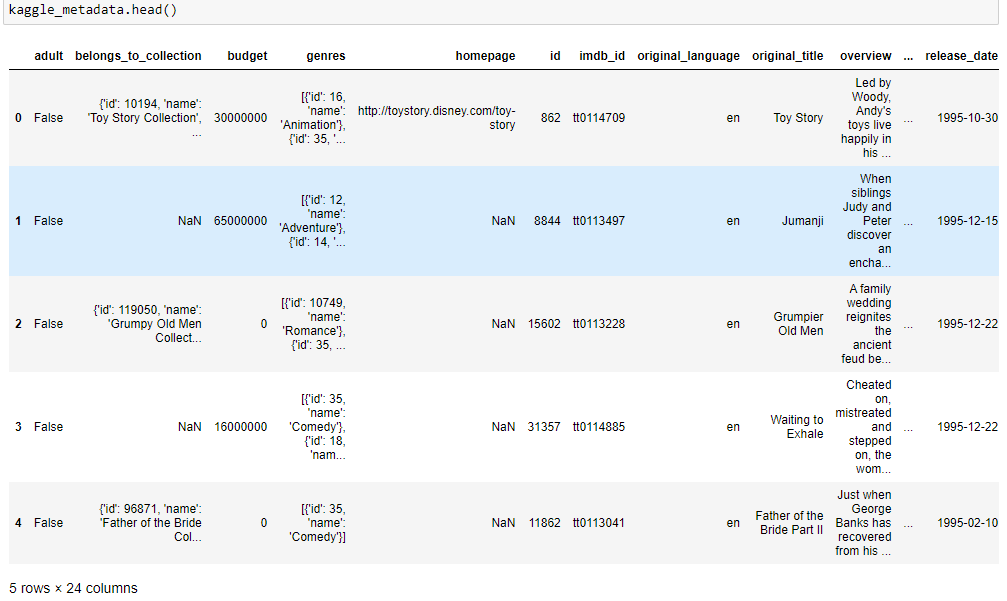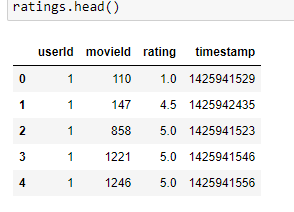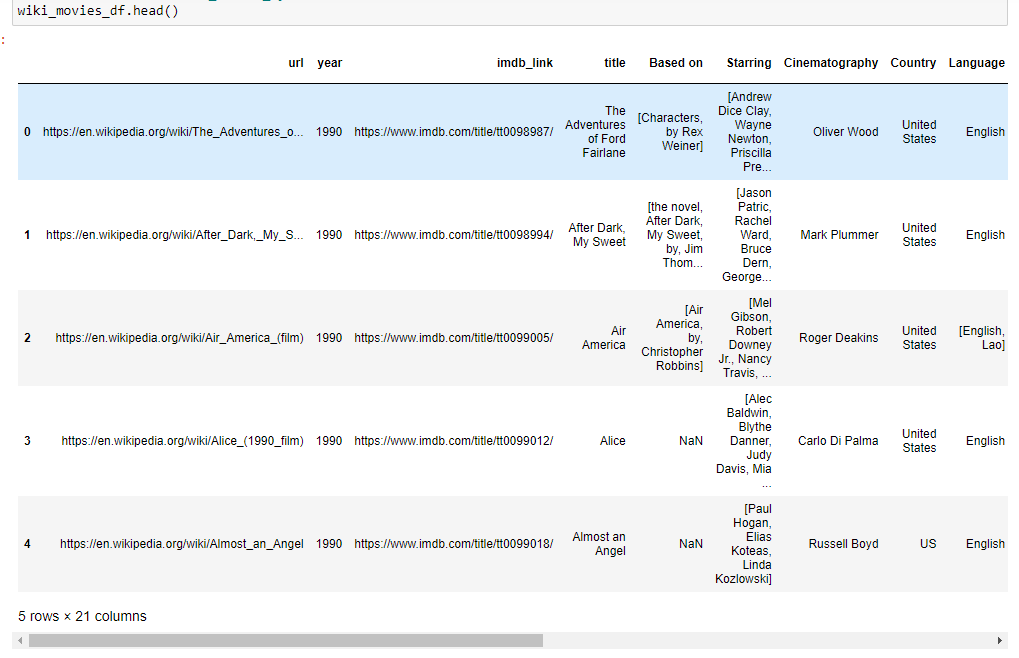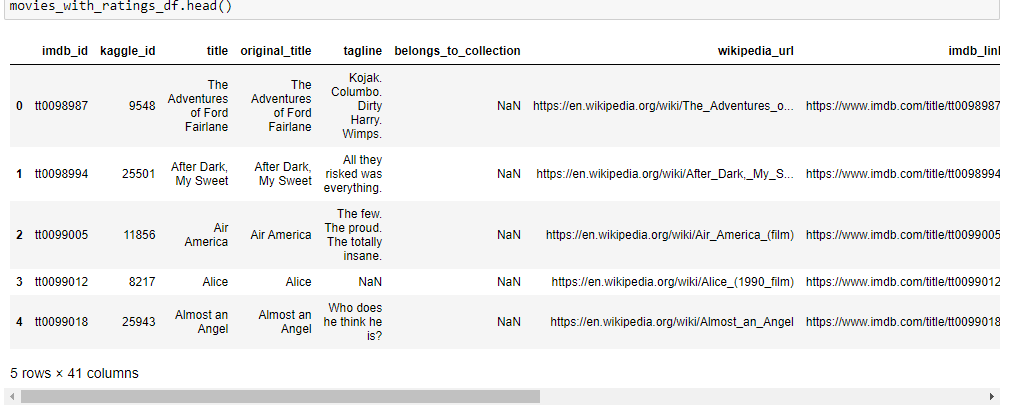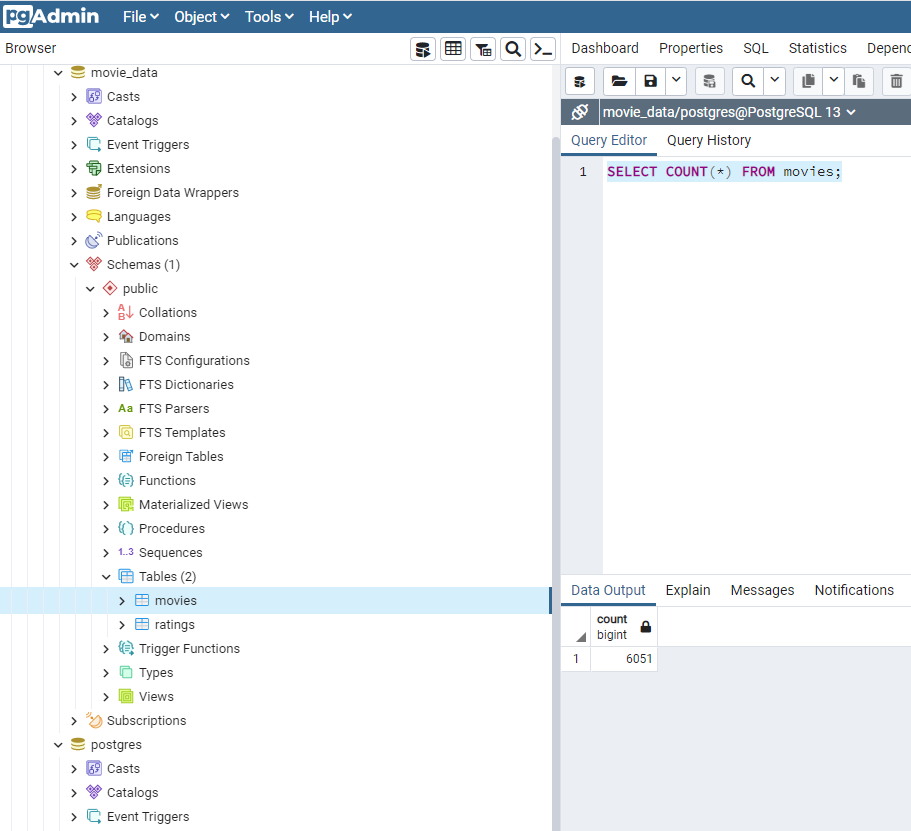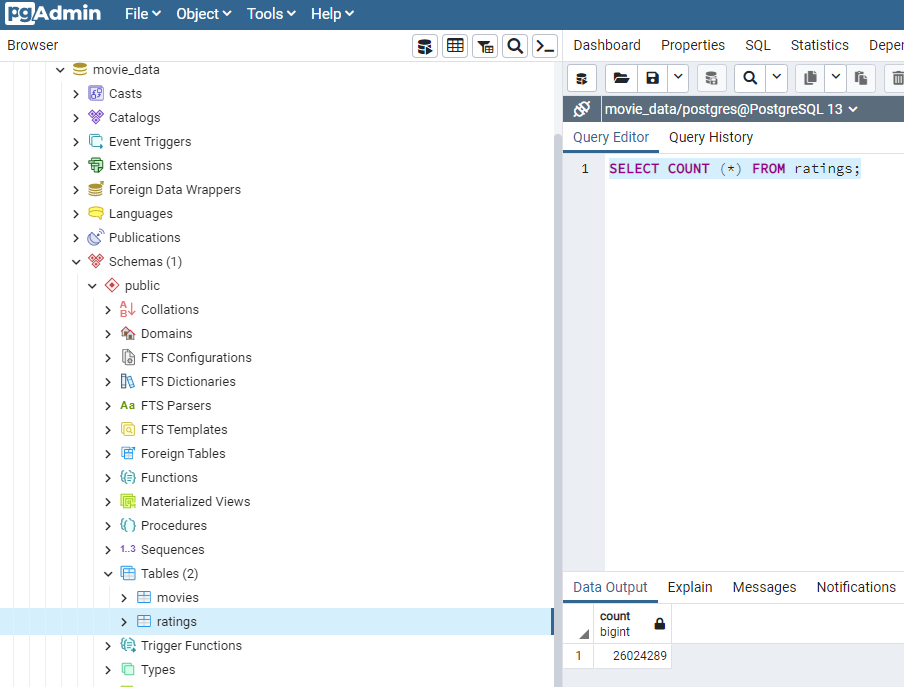This analysis is created to provide Amazing Prime necessary data to develop an algorithm to predict which low-budget movies being released or become popular so that they can buy the streaming rights at a bargain.
We will need to create one function that takes in the three files—Wikipedia data, Kaggle metadata, and the MovieLens rating data—and performs the ETL process by adding the data to a PostgreSQL database using the following process to accomplish the goal:
- The "process_ETL" function to run through the data pipeline from extraction, transformation, and loading.
- Wikipedia-movies.json, movies_metadata.csv, and ratings.csv.
- perform the transformation steps, which include cleaning data from both Wikipedia and Kaggle.
- Wikipedia and Kaggle Movies datasets are merged into one dataset.
- The ratings dataset is kept apart.
- The newly transformed datasets are then loaded into SQL database.
-
Convert the Wikipedia JSON file to a Pandas DataFrame
-
Read Kaggle metadata into a DataFrame
-
Read ratings csv into a DataFrame
-
Transform wiki_movies_df
-
Kaggle data transformed and rating data is added
-
Movie Database is created
Movie data is extracted, transformed and loaded into a Database and ready to be analyzed.

